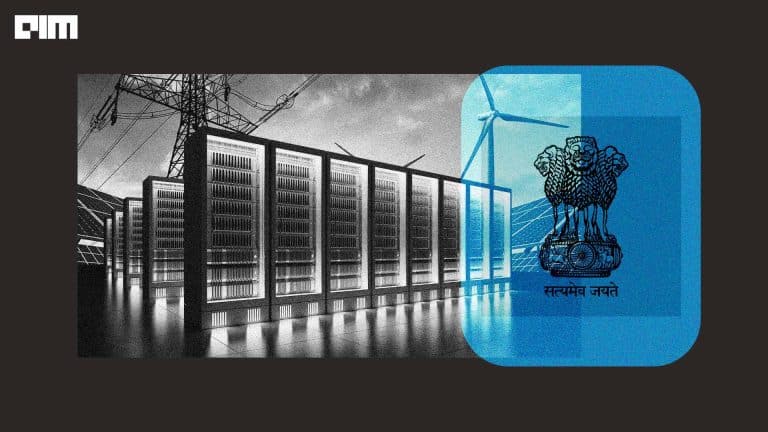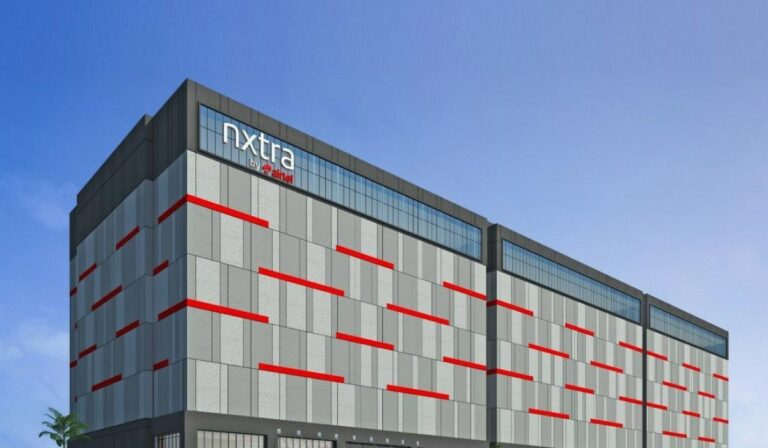|
Listen to this story
|
The exponential growth in data generation and consumption is driving an increased demand for data centres to manage and store this vast volume of information effectively. According to an ANAROCK-Binswanger report, 45 new data centres—covering 13 million sqft and 1,015 MW of capacity, are expected to come up by the end of 2025 in India.
However, data centres also consume a lot of energy contributing significantly to greenhouse gas emissions. Data centres currently account for around 3% of global electricity consumption, and this figure is anticipated to increase to 4% by 2030, according to Vertiv, a global provider of critical digital infrastructure and continuity solutions.
An average hyperscale facility consumes between 20-50 MW each year, which is theoretically sufficient to power as many as 37,000 households. Hence, it has become imperative for companies to seek ways to mitigate the environmental impact of their data centres, and the concept of green data centres has emerged as a viable solution.
To make their data centres green, many companies have shifted their focus to renewable energy. For example, AWS has set a goal to power its data centres entirely with renewable energy sources by 2025. “To create environmentally friendly data centres, renewable energy is a vital component, however, it is not the sole solution,” Jaganathan Chelliah, senior director – marketing, India & Middle East and Africa, Western Digital, told AIM.
Use of efficient hardware and software
Besides renewable energy, Chelliah believes data centres can optimise energy efficiency through the use of efficient hardware and software, green building design, advanced server design and cooling techniques.
“For example, Western Digital Ultrastar Data102 storage platform (JBOD) uses innovative ways to cool the drives to ensure that it is done more efficiently and effectively. Equipped with the ArcticFlow™ technology, the Ultrastar Data102 storage platform can require just over half the standard cooling power per drive slot to get the same average drive temperatures,” he said.
Another component of green data centres is the storage infrastructure. Data centre companies can explore high-capacity Hard Disk Drives (HDDs) that offer greater storage density and low power. “Selecting the right HDD can significantly increases data storage capacity, reduces overall power consumption, and enhances data resilience.”
To help data centres go green, Western Digital has introduced the world’s highest capacity drives, the Ultrastar DC HC570 22TB CMR HDD in India, which leads the industry in areal density.
“It is a powerful combination of technology and innovation for cloud-scale customers to increase capacities and performance, in addition to keeping TCO manageable. For example, using 22TB HDDs versus 16TB HDDs to deploy 2PB of storage would require 27% fewer servers and use 26% lower energy consumption in Watts/TB to store the same amount of data.”
There is also less infrastructure and maintenance cost by eliminating the extra servers, according to Chelliah, so overall, TCO savings is achieved by using higher capacity 22TB and eliminating servers and all other supporting infrastructure.
“Furthermore, alongside these technical measures, embracing regulatory compliance and supporting carbon offset programmes can further contribute to the goal of green data centres. By adopting a holistic approach that combines these strategies, data centres can significantly reduce their environmental impact while ensuring reliable operations,” said Chelliah.
Data centre market in India
The Indian data centre market is also experiencing exponential growth, driven by the increasing demand for data across diverse industries. This expansion is attracting new players to India’s rapidly developing data centre sector.
The remarkable growth can be attributed to several factors, including widespread digitisation across industries, the rise in AI, the proliferation of the Internet of Things (IoT), easily accessible internet connectivity, the rapid increase in smartphone usage, and supportive regulatory policies.
“The onslaught of generative AI tools is also going to lead to an explosion in data. Moreover, the government has acknowledged the crucial role of data centres during the pandemic and has granted them infrastructure status.”
Several state governments are extending support through a range of incentives, including subsidised land, power subsidies, exemptions on stamp duty, incentives for renewable energy adoption, and discounts on locally manufactured IT components, among other benefits.
“As data centre infrastructure grows in complexity, there is a shift towards consolidating different storage device form factors into a single system. Chief Information Officers (CIOs) are selecting specific data storage solutions based on unique application requirements, whether it’s opting for enterprise HDDs for large capacity storage or utilising the latest NVMe solutions for increased agility,” he said.
How Western Digital is preparing for it?
The growing demand for robust data management strategies is an opportunity for Western Digital and the data storage company anticipates strong demand for our products over the next three to five years.
On the business-to-business side, Western Digital has three key focus areas, smart video solutions, automobile ecosystem and hyperscale, cloud and enterprise data centres, Chelliah said.
“Last year, we launched the 22TB Ultrastar DC HC570 HDD. More recently, Western Digital launched the enhanced OpenFlex™ Data24 3200 NVMe-oF™ JBOF/Storage Platform and the new Ultrastar DC SN655 PCIe® Gen 4.0 dual-port NVMe SSD to unlock the potential of AI, object storage, file sharing and more.”
These solutions help data centre architects manage, scale and utilise storage assets more efficiently. Overall, our strong market position and innovative products prove to be a competitive advantage.
Moreover, Chelliah believes the rise of generative AI will also drive the demand for more powerful hardware, faster and higher-capacity storage, increased network bandwidth, the development of edge computing capabilities, and higher power usage.
“One of the best storage solutions is the Ultrastar® DC SN655 NVMe™ SSD from Western Digital. It is an ideal solution for data centres that need high-capacity, cost-optimised, read-intensive performance for data-intensive applications.”



















































































